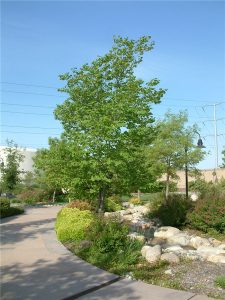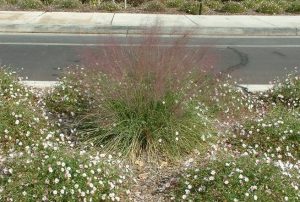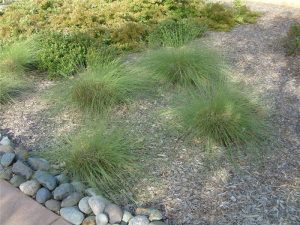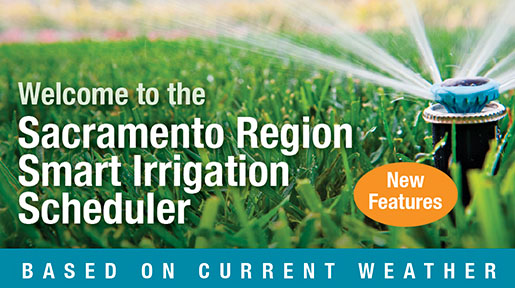Expert Insights on Choosing Trees, Shrubs and Perennials to Thrive Decades into the Future
By Debbie Arrington
Guest Writer
 When planting a tree – or any landscaping – consider the weather; not just now, but for decades to come.
When planting a tree – or any landscaping – consider the weather; not just now, but for decades to come.
That sapling, for example, may live generations. How many droughts will that tree face in its lifetime? How many windy, wet winters will it endure? In a changing climate, that tree needs to stand up to anything.
“In the Sacramento region, our climate is becoming more and more unpredictable,” observes water-wise landscaping and sustainability expert Cheryl Buckwalter of Landscape Liaisons. “It’s hotter in the summer months, with high temperatures lasting for longer periods of time. When we have rain events in the winter, the storms are stronger with more than average precipitation, and winter temperatures are not as cold.”
Buckwalter urges people to plant thoughtfully with an eye on the future. That means choosing resilient trees, shrubs and perennials that can withstand dry times as well as wet and windy weather.
Recent weather events – from prolonged droughts to winter floods to even tropical storms – are a taste of what’s to come.
“These extreme conditions have not happened overnight,” Buckwalter warns. “Don’t ignore them and act now to prepare your gardens. This can start with making better plant choices.”
Start by choosing water-wise varieties over traditional high-water users. Says Buckwalter, “When selecting plants, be objective about the conditions that plants will have to endure. Look for plants that are described as being suitable for windy conditions, periods of rain inundation, erosion control and so on.”
Choose the right plant for the right place, she adds. “I cannot say this enough: Right plant, right place. Plants won’t survive long-term unless they’re tolerant of changing conditions.”
Help plants be more resilient by giving them a good start. Good drainage is a must. “Improve your soil with compost and be generous when applying mulch,” says Buckwalter.
 California natives are among the right plants for the Sacramento region. Besides natural drought tolerance, native plants offer the added plus of supporting wildlife, Buckwalter says. “We need to be planting more California native plants because they are resilient, adaptable and can even be fire resistant when hydrated and maintained. They create excellent habitat for native animals and insects and all of garden life, so they add to biological diversity, which is rapidly being lost to their detriment and ours.”
California natives are among the right plants for the Sacramento region. Besides natural drought tolerance, native plants offer the added plus of supporting wildlife, Buckwalter says. “We need to be planting more California native plants because they are resilient, adaptable and can even be fire resistant when hydrated and maintained. They create excellent habitat for native animals and insects and all of garden life, so they add to biological diversity, which is rapidly being lost to their detriment and ours.”
With their low-water needs while also supporting wildlife, native plants can be ideal for replacing thirsty lawns. A favorite to bees and butterflies is yarrow, which is native to much of California. Blue grama grass (Bouteloua gracilis) and deergrass (Muhlenbergia rigens) are both attractive ornamental grasses. Buckwalter also recommends ‘Regal Mist’ pink muhly (Muhlenbergia capillaris), “a show stopper in the fall.” Several other suggestions can be found at BeWaterSmart.info.
“We need to realize that lawns are habitat wastelands and no lawn can be truly low water,” Buckwalter says.
Because they have the potential to live so long, trees must get a good start to maintain good health.
“Trees provide so many benefits to our lives in Sacramento: shade, habitat, cooling, atmosphere, quality of life,” Buckwalter says. “I cannot stress enough how important it is to plant trees properly! Water them before, during, and after planting, and continue to water them well during establishment. Stake trees only if needed and remove stakes as soon as they are not.”
Among Buckwalter’s favorite trees are oaks; several species are native to California and offer excellent habitat as well as resiliency and shade. Southwestern species such as Texas red oak (Quercus buckleyi) and Sierra oak (Quercus canbyi) also are good choices.
Certified arborist Marcia Stott, who often works with Buckwalter, offered these resilient tree recommendations: Western redbud (Cercis occidentalis), shoe-string acacia (Acacia stenophylla), and desert willow cultivars (Chilopsis linearis).
“I love ‘Bubba’ and ‘Burgundy’ desert willows,” Buckwalter says. “These trees look delicate, but they are tolerant of drought and wind, and hummingbirds and bees love them!”
 For resilient and water-wise shrubs, Buckwalter recommends Cleveland sage, manzanita hybrids, California lilacs (especially ‘Dark Star’ and ‘Julia Phelps’) and coffeeberry (Rhamnus californica). Among her top picks of perennials: Red-flowered buckwheat, California fuchsia, showy milkweed and rose mallow. While looking good, each also supports wildlife.
For resilient and water-wise shrubs, Buckwalter recommends Cleveland sage, manzanita hybrids, California lilacs (especially ‘Dark Star’ and ‘Julia Phelps’) and coffeeberry (Rhamnus californica). Among her top picks of perennials: Red-flowered buckwheat, California fuchsia, showy milkweed and rose mallow. While looking good, each also supports wildlife.
“We need to wake up and realize that our future doesn’t involve just us,” Buckwalter says. “We need to think of all living things – trees, plants, animals, insects, pollinators, etc. – that create and maintain our environment, and provide our food. Our futures depend on us and our actions today.”
Resources for resilient water-wise plant suggestions:
https://www.rwa.watersavingplants.com/
https://climatereadytrees.ucdavis.edu
https://resilientlandscapescoalition.org/
https://roseville.ca.us/plantlist
———————————————————————————————————————————-
Debbie Arrington is a longtime home and garden reporter and co-author of the blog Sacramento Digs Gardening: https://sacdigsgardening.californialocal.com/

